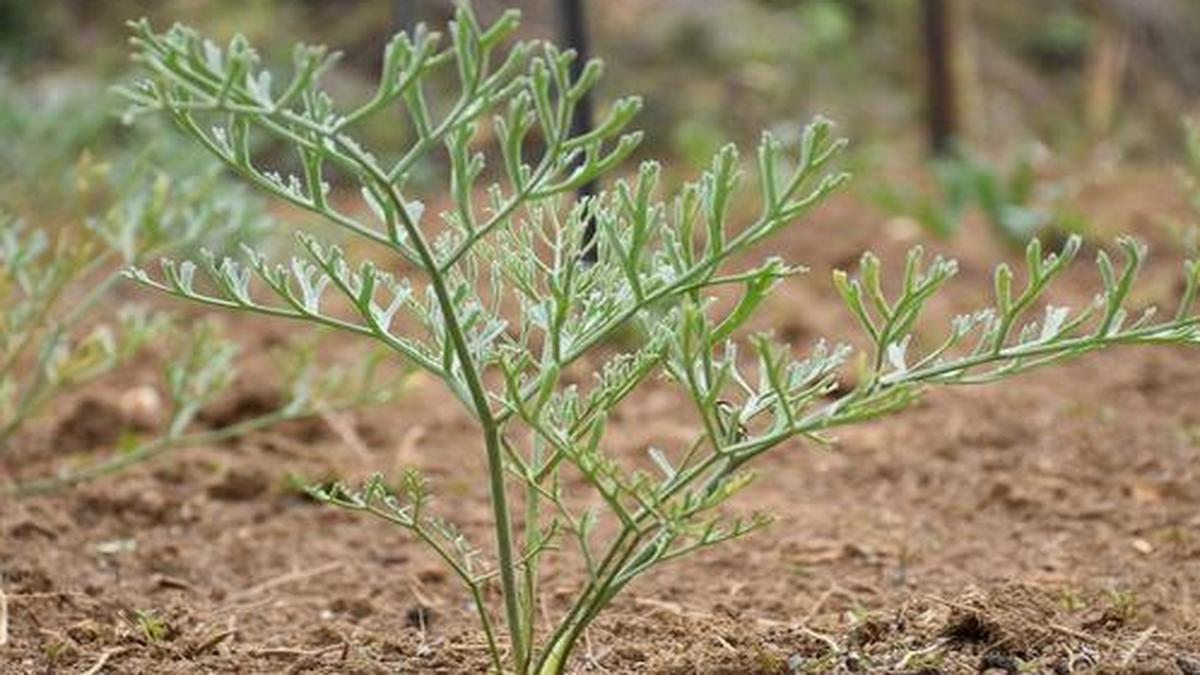India’s Breakthrough in Heeng Cultivation

- 11 Jun 2025
In News:
CSIR-IHBT reported the first flowering and seed setting of heeng in Palampur (1,300 m above sea level). This confirmed the successful acclimatisation and domestication of Ferula assa-foetida in Indian agro-climatic conditions.
This milestone is significant because:
- It proves India’s capability to cultivate heeng domestically.
- It completes the reproductive cycle—a prerequisite for long-term commercial production and sustainability.
- It expands the scope of cold-arid agriculture beyond traditional zones.
Background:
- Heeng or asafoetida (Ferula assa-foetida) is a perennial herb, long revered in Indian culinary and medicinal traditions.
- It is widely mentioned in ancient texts such as the Mahabharata, Charaka Samhita, Pippalada Samhita, and the works of Panini, known for its digestive, aromatic, and therapeutic properties.
- Despite being the world’s largest consumer of heeng, India was entirely import-dependent until the early 2010s, sourcing it mainly from Afghanistan, Iran, and Uzbekistan.
- This was because the species Ferula assa-foetida, the true source of asafoetida, was not found in India—only related species like Ferula jaeschkeana (Himachal Pradesh) and Ferula narthex (Kashmir and Ladakh) existed, which do not yield the culinary resin.
Botanical & Climatic Requirements:
- Plant Type: Perennial, takes about 5 years to mature and flower.
- Soil: Prefers sandy, well-drained soil with low moisture.
- Climate: Thrives in cold, arid environments, requires annual rainfall below 200–300 mm.
- Temperature Range: Grows best in 10–20°C, tolerates up to 40°C, and survives winter lows of –4°C.
- Propagation: The oleo-gum resin (asafoetida) is extracted by making incisions in the plant’s fleshy taproot and rhizome, yielding a latex that hardens into a gum, which is dried into powder or crystal form.
The Indigenous Cultivation Effort:
In a major step toward self-reliance, the Council of Scientific and Industrial Research – Institute of Himalayan Bioresource Technology (CSIR-IHBT) in Palampur, Himachal Pradesh, initiated India’s first project for indigenous heeng cultivation.
- Seed Procurement: Between 2018–2020, IHBT coordinated with agencies and suppliers in Iran, Afghanistan, Uzbekistan, Tajikistan, and South Africa. Seeds were finally procured from Iran and Afghanistan with import approvals and quarantine protocols handled by ICAR-National Bureau of Plant Genetic Resources (NBPGR).
- Research and Trials: Researchers developed germination protocols for seeds with low viability and conducted trials at IHBT Palampur and Ribling in Lahaul-Spiti to determine altitude-specific suitability and agronomic practices.
- Milestone Event: On October 15, 2020, the first heeng sapling was planted in a farmer’s field in Kwaring village, Lahaul Valley—marking the start of India’s heeng cultivation journey.
Expansion and Institutional Support:
- New Cultivation Zones: From cold desert areas, cultivation extended to mid-hill regions such as Janjheli in Mandi. Demonstration plots and farmer training programmes were established across Lahaul-Spiti, Kinnaur, Mandi, Kullu, and Chamba.
- Early Adopter Villages:
- Lahaul & Spiti: Madgran, Salgran, Beeling, Keylong
- Mandi: Janjehli, Kataru, Majhakhal, Karsog
- Kinnaur: Kalpa, Hango, Reckong Peo, Maling
- Kullu: Kotla–Banjar, Bagsaid, Dhaugi–Sainj
- Chamba: Pangi, Bharmour, Tooh, Mahala
- Heeng Germplasm Resource Centre: Established at IHBT Palampur in March 2022, this national hub oversees research, conservation, seed production, and propagation of heeng.
- Tissue Culture Innovation: A dedicated lab was developed to scale up propagation using modern techniques, supported by the Government of Himachal Pradesh. Ecological niche modelling using GPS and climate data helped map ideal cultivation areas.
